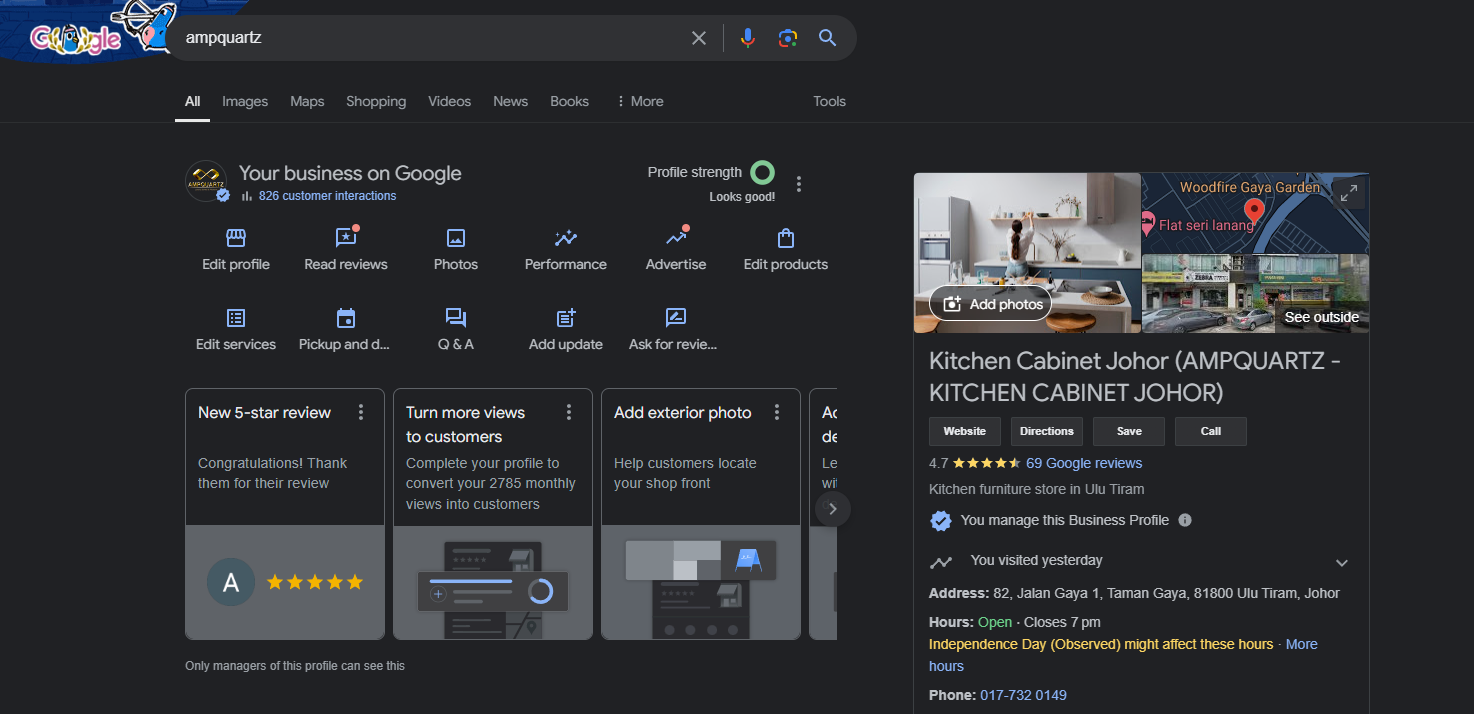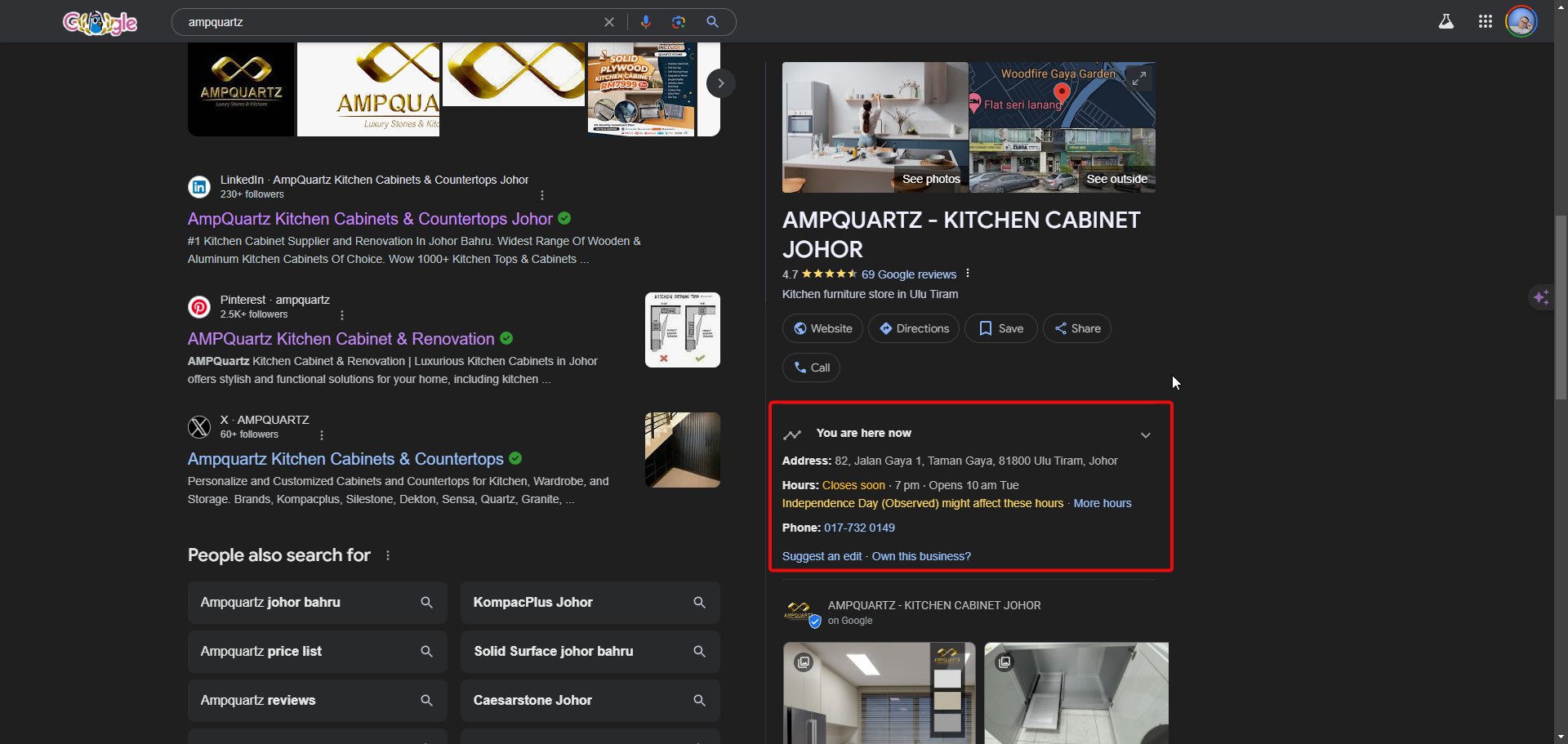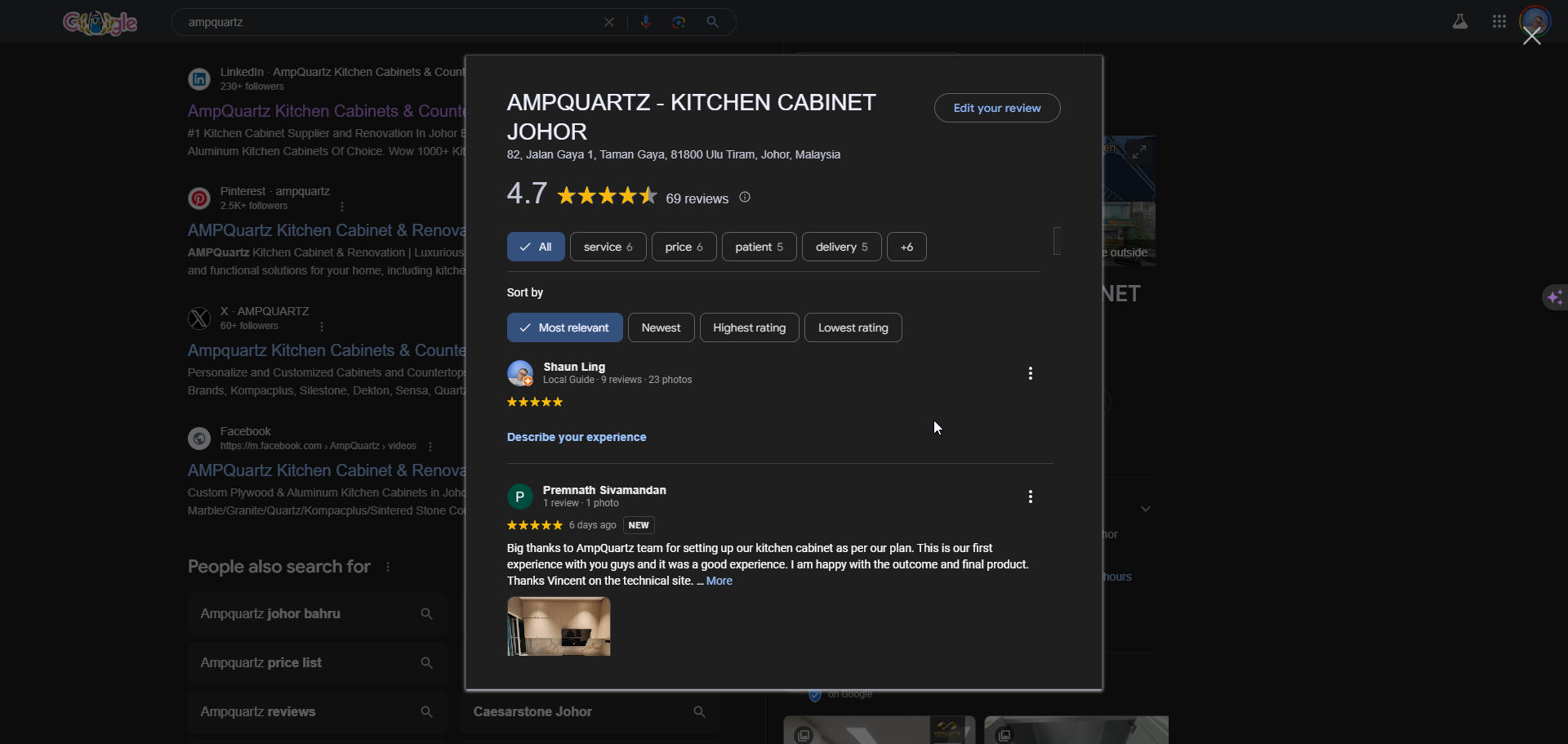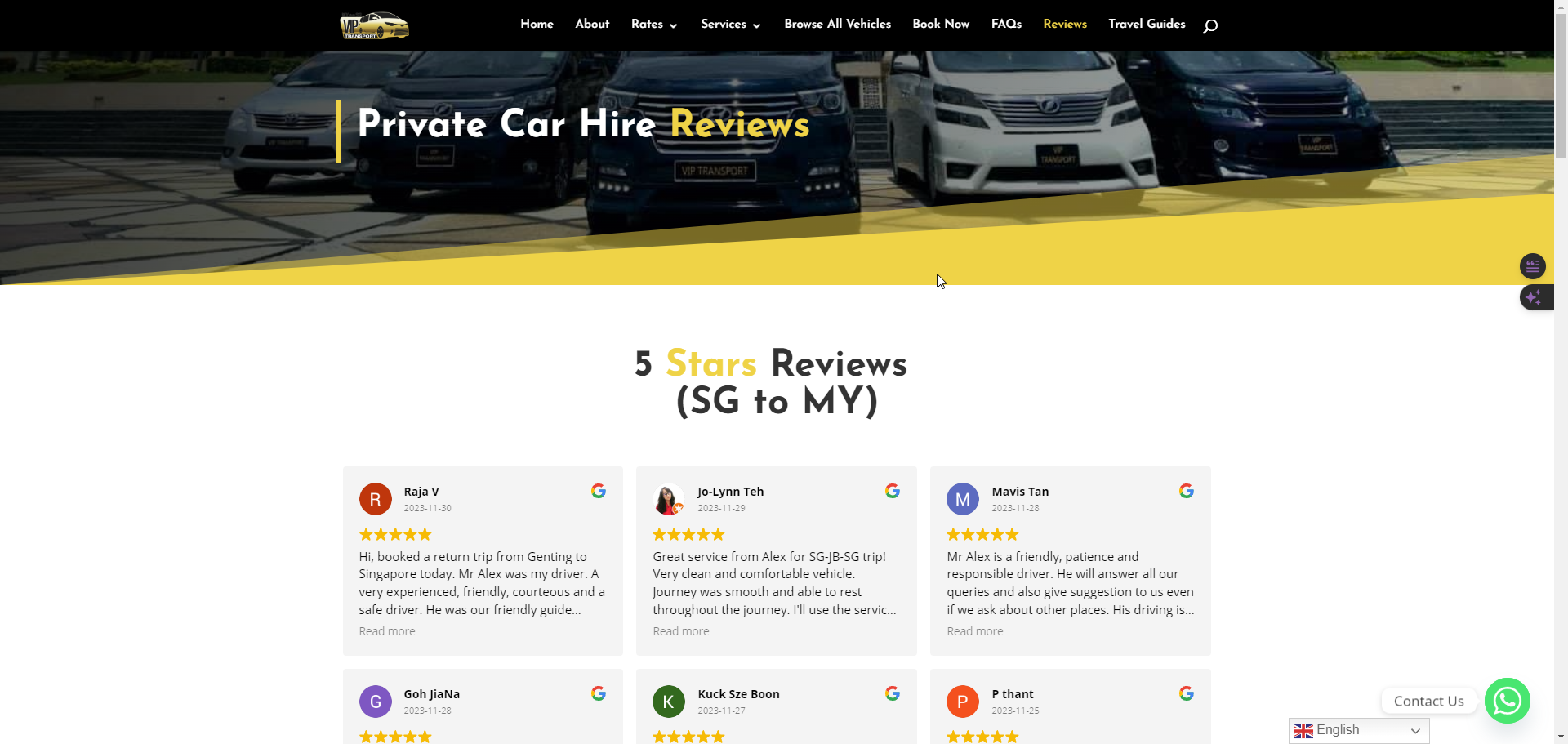
Walk down any bustling street, and you’ll notice businesses vying for local attention. Retail SEO is indispensable for businesses in this digital age.
It’s about being visible and relevant.
By refining your website for local SEO, your retail business can attract more foot traffic, elevate online visibility, and convert local searches into loyal customers.
Importance of Local SEO for Retail Businesses
In today's digital era, local SEO has become crucial for retail businesses seeking success in their communities.
Localized search optimization increases your visibility among nearby consumers.
Capturing the interest of local customers involves appearing prominently in search engine results and on maps apps. This surge in visibility leads to a growth in foot traffic and sales.
Retail businesses must capitalize on the benefits of local SEO to stay competitive. By optimizing their online presence, they secure higher rankings in search results, translating into tangible business growth and stronger community connections.
Understanding Your Local Audience
Get to know who lives, works, and shops in your local area.
To start, it’s paramount to gather as much information as possible about your local customer base, which can be efficiently achieved through in-depth keyword research. Engage with community resources, study demographic data, and analyze buying behaviors to develop targeted marketing strategies. This comprehensive understanding allows you to craft personalized messages that resonate with locals.
Additionally, industry tools like Google Analytics and Facebook Insights are invaluable. They offer granular details about visitor behavior and preferences, helping you tailor your SEO efforts to focus on what matters most to your audience.
By adopting a deeply empathetic approach to understanding your local market, you anticipate needs and preferences. This knowledge paves the way for creating locally relevant content, fostering stronger connections, and ultimately driving more foot traffic to your retail business.
Setting Up Your Google Business Profile

Setting up your Google Business Profile is a critical step in optimizing your local SEO strategy. This resource allows your retail business to appear in local search results, significantly boosting visibility and customer engagement.
To maximize the effectiveness of your profile, begin by creating or claiming your business listing. Make sure to fill in every detail accurately, from the business name and address to operating hours and contact information. Upload high-quality photos and encourage satisfied customers to leave reviews, as these elements significantly influence potential visitors' decisions.
Creating a Complete Profile
A comprehensive business profile, a linchpin to effective local SEO, makes your retail store shine. Accurate details render your business more approachable and credible in the eyes of potential customers.
Consistency across platforms like Google My Business, social media, and review sites is quintessential. This broadens your reach and fosters aura of professionalism and reliability.
Accurate business profiles drive up to 70% more engagement online.
Equally important are visuals: high-quality photos of your store, products, and team that convey quality and trust. Crafting concise, engaging descriptions and updating your profile regularly with long-tail keywords will keep your audience informed and intrigued. This continual effort projects confidence and dedication, encouraging repeat visits and reinforcing your local market presence.
Optimizing Business Information

Accurate and consistent business information enhances your retail website’s local SEO. Customers rely on this information to make informed decisions about visiting your store.
Detailed business information should include your store's name, address, phone number, and operating hours.
Ensure these details are consistent across all online platforms, including your website, Google My Business, and social media profiles.
Beyond basic contact details, consider including information such as parking availability, nearby public transport, and accessibility features.
Providing such comprehensive details helps customers and improves search engine rankings. Inaccurate or inconsistent information can lead to confusion and lost business opportunities.
Ultimately, the more effort you invest in ensuring your information is accurate, the greater the payoff. Yext, Moz Local, and other tools can help streamline information management.
Utilizing Location-Specific Pages
Creating location-specific pages can significantly enhance your website's local SEO efforts by targeting the unique characteristics of your various store locations. Each page should detail relevant information such as address, phone number, and store-specific promotions to drive local engagement.
These targeted pages improve the likelihood of appearing in local search results and connecting with an audience actively seeking your products or services near their location.
Creating City-Level Pages
Creating city-level pages propels local engagement.
When developing city-level pages, focus on each city's distinct qualities. Populate each page with unique content tailored to the locale's demographics, preferences, and interests. Mention nearby landmarks, events, and popular spots to create a deeper connection with local visitors. Incorporate testimonials from customers in that city to establish trust and reliability.
Ensure accuracy in content.
Implement keywords specific to each city – not just the city name but related phrases naturally weaved into the text – to enhance page relevance and search engine visibility.
By crafting well-optimized city-level pages, retail businesses can connect more profoundly with local communities, harnessing their full potential. Evolving alongside dynamic urban landscapes, these optimized pages empower businesses to adapt and thrive in the ever-competitive 2024-2025 market landscape. Such endeavors foster sustained growth while fortifying your brand's local presence.
Structuring Content for Local SEO
Optimizing content for local SEO is crucial for retail businesses aiming to enhance their local visibility and customer engagement.
- Incorporate Local Keywords: Use city-specific terms and related phrases naturally within your content.
- Create Localized Content: Develop blog posts, articles, and web pages that are relevant to local events, news, and interests.
- Engage with Local Links: Obtain backlinks from local businesses, news sites, and community organizations.
- Leverage Customer Testimonials: Highlight reviews and testimonials from local customers to build trust and credibility.
These strategies ensure your website resonates with local audiences, increasing both traffic and conversions.
Embracing local SEO can create a robust connection with your community, driving sustained business growth.
Adding Local Address in Blog Posts
Including your store’s address in blog posts is a simple yet highly effective strategy. This reinforces your local presence and provides clear and direct information for potential customers.
By strategically placing your address at the bottom or within the content, you emphasize the “where” of your business. This is not just a practice to reach local audiences, but also a signal to search engines, enhancing your visibility. The more consistently you provide this information, the better your chances of appearing in local search results. This small addition can make a significant difference in connecting with your community and building your brand.
Enhancing Content with Local Addresses
Integrate your local address prominently.
Consistently featuring your store's address on your website and in various online content can significantly bolster local SEO. This practice helps search engines confirm your business’s location, improving your chances of appearing in relevant local search queries. Strategically placing your address across multiple web pages amplifies this effect, ensuring greater visibility.
Optimize your pages accordingly.
Consider embedding your address in page footers, contact sections, and blog posts. This ensures that search engines and visitors effortlessly recognize your business's location. The frequent visibility of your address across your site provides search engines with numerous “local signals,” thus enhancing your local search ranking.
Including relevant local landmarks or neighborhood names in your content can slightly boost your SEO. This approach helps your site appear in searches for nearby locations and fosters a sense of locality and belonging in your community.
Updating this information regularly and maintaining consistency across all online platforms can be instrumental in your local SEO success. Remember, the goal is to make it as easy as possible for potential customers and search engines to locate your business, thus driving more organic traffic and fostering deeper community connections.
Improving Visibility with Structured Data
Leveraging structured data can drastically enhance your retail website’s visibility and search engine performance, a pivotal aspect of retail SEO.
- Rich Snippets: Improve click-through rates with eye-catching search results.
- Local Business Markup: Highlight essential business information directly in search results.
- Product Markup: Showcase product details such as price, availability, and reviews.
- Event Markup: Promote in-store events and activities to attract local customers.
Implementing structured data allows search engines to understand better and display your content, driving more organic traffic.
This enhanced visibility can increase customer engagement and sales, making it an indispensable tool for retail businesses.
Leveraging Local Context
Harnessing local contexts allows retail businesses to craft rich, geographically relevant experiences that drive traffic and customer loyalty. By embedding location-based and long-tail keywords, integrating local culture and events, and engaging with the community through localized content, retail websites can improve their SERP rankings and foster a genuine connection with their audience. This dual approach of technical SEO and community integration results in a more authentic and impactful digital presence.
Writing About Local Incidents
Incorporating local incidents can significantly enhance the relevance of your website.
In 2024, for instance, a downtown retail shop improved engagement by discussing a local festival. This story highlighted community involvement, which fostered a deeper connection with local customers.
It's not just about creating content. Analyzing the incidents' keywords also helps in crafting articles that align with what your audience is searching for, leveraging the power of keyword research.
These stories emphasize the brand's local roots, showing that you are more than just a business; you're an integral part of the community. This engagement often translates to increased foot traffic and customer loyalty.
Such initiatives will surely elevate your SEO efforts while inspiring community-centric marketing strategies.
Highlighting Local Events and Happenings
Retail businesses can draw in their community and foster stronger connections by encapsulating the essence of local events.
Participating in or promoting local events on a business's website offers valuable information and shows your engagement and support for community initiatives. Highlighting events like local fairs, charity runs, or seasonal festivals allows your website to appear in search results for these specific happenings, attracting local visitors to search for these activities.
Additionally, these efforts put you in a favorable light, showcasing your commitment to the community. As customers seek businesses that value their locality, your proactive promotion of these events positions you as a trusted and integral community member.
Ultimately, consistently featuring local happenings can significantly enhance retail businesses' SEO by driving website traffic and establishing a reputable local presence. Embracing this strategy can foster customer loyalty, increase local search traffic, and lead to sustained business growth while enriching community ties.
Generating Local Reviews and Testimonials
Fostering an environment where customers are encouraged to share their experiences is paramount. Positive reviews and testimonials significantly boost your business's visibility, garnering local recognition.
To achieve this, make requesting reviews an integral component of your customer interaction (both online and in-store). By emphasizing how feedback helps improve customer experience, you'll motivate customers to provide valuable testimonials, benefiting your local SEO.
Words like “top-notch” and “outstanding” in reviews can spontaneously enhance your ‘local relevance'.
Encouraging Customer Reviews

Encouraging customer reviews is vital for retail business success. Reviews can significantly impact local SEO by enhancing a store's online visibility and reputation.
Firstly, ensure that asking for reviews is seamlessly integrated into your customer service process, both in-person and online. Encourage satisfied customers to share their positive experiences on review platforms. Highlighting that their feedback profoundly influences your service quality can stimulate a steady stream of compelling testimonials.
It creates a smooth, user-friendly process for customers to leave reviews. Whether through follow-up emails, SMS, or QR codes linking directly to review sites, make it easy and convenient. This increased accessibility can foster a more robust online review profile, which is vital for local SEO.
Personally respond to reviews, reflecting your appreciation and professionalism. Acknowledging positive feedback promotes customer loyalty while addressing concerns shows commitment to improvement. This active engagement fortifies your local SEO for retail businesses and cultivates trust and credibility among your customer base.
Displaying Testimonials on Your Site

Strategically showcasing testimonials on your website supercharges your credibility among potential customers and fuels your local SEO efforts. Including this social proof not only reassures visitors of the quality of your offerings, but also enhances your site's attractiveness to search engines.
Implement testimonial widgets directly on key landing pages.
Doing so seamlessly integrates customer feedback into your website's layout, providing prospective buyers a compelling reason to trust your business. This approach can significantly boost conversion rates, as real customer experiences often resonate more profoundly than other forms of advertising.
To maximize the impact, ensure that the testimonials are diverse and highlight different aspects of your business. Incorporate feedback about your exceptional customer service, product quality, and seamless shopping experience. Extended reviews with detailed narratives are more persuasive and can create a strong connection with your audience.
Lastly, pay attention to the visual presentation of your testimonials. Use a combination of text, ratings, and customer pictures to make the testimonials engaging and relatable. By doing so, you transform customer voices into powerful marketing assets, reinforcing your brand’s trustworthiness and boosting local SEO for retail businesses.
Optimizing for Mobile Users
In today's fast-paced, mobile-driven world, ensuring your website is optimized for mobile users is paramount for retail businesses. A mobile-friendly site enhances user experience and plays a critical role in local SEO. Responsive design, quick-loading pages, and intuitive navigation should be the cornerstones of your mobile strategy. By prioritizing mobile optimization, you cater to the growing number of shoppers who rely on their smartphones, increasing your chances of capturing a broader customer base and driving local traffic to your retail establishment.
Ensuring Mobile-Friendliness
When prioritizing retail SEO for businesses, ensuring your mobile-friendly website is essential for success.
Today's consumers expect an exceptional smartphone browsing experience, including seamless mobile-friendly website navigation, readable text without zooming, and fast-loading pages. Consequently, mobile-friendliness directly impacts user satisfaction and search engine rankings, making it imperative for retailers to stay ahead in the competitive landscape. To effectively capture this growing audience, your website must be accessible and attractive to mobile users.
Embracing a responsive design is a pivotal step in creating a mobile-friendly website. This approach ensures that your site automatically adjusts its layout and content to the device's screen size, offering an optimal viewing experience. A responsive design enhances usability and aligns with Google’s mobile-first indexing policies, thereby improving your site's performance in search results.
Diligent testing and continual optimization are crucial in maintaining a mobile-friendly site. Regularly analyze user behavior and engagement metrics to identify and rectify potential issues. By fostering a mobile-first mindset, retailers can cultivate a superior user experience that keeps customers coming back, ultimately amplifying their local SEO efforts and solidifying their position in the market.
Local SEO Benefits for Mobile Users
Mobile users are an increasingly significant segment of the consumer base, creating a pivotal opportunity for retail businesses to enhance their local SEO strategies. This will extend a superior customer experience and amplify their market reach.
Optimizing for local search results on mobile devices drives targeted traffic to your physical store locations.
Local SEO ensures mobile users can discover your business quickly, regardless of location, fostering enhanced convenience and customer satisfaction.
Furthermore, mobile-friendly local SEO tactics increase foot traffic, as potential customers are more likely to visit nearby stores discovered through their mobile searches.
Investing in local SEO for mobile users also bolsters your business's online visibility, enhancing brand recognition and trustworthiness among the local community.
Therefore, the value of local SEO extends beyond online interactions. It converts digital visibility into tangible, in-store visits and strengthens your overall business footprint in the local market.
Tracking and Analyzing Local SEO Performance
Effective tracking and analysis of local SEO performance are paramount to leveraging your strategies effectively. Key metrics such as organic traffic, keyword rankings, keyword research, and online visibility must be meticulously monitored to yield insightful data for optimization.
These performance indicators help refine your approach, ensuring continuous improvement and sustained growth in the competitive local market by incorporating effective strategies for leveraging long-tail keywords.
Using Analytics SEO Tools for Local Retail Businesses
Incorporating analytics tools is essential for optimizing SEO for retail businesses. These tools provide crucial data to refine your strategies effectively.
- Google Analytics: Offers comprehensive insights into user behavior, traffic sources, and conversion rates.
- Google Search Console: Monitors website performance and identifies crawling or indexing issues.
- SEMrush: Enables in-depth keyword analysis and tracks competitor activities.
- Moz: Provides valuable data on local SEO metrics, link building, and keyword rankings.
- BrightLocal: Specializes in local search analytics and competitive benchmarking.
Use these tools to monitor and measure key performance indicators (KPIs) consistently. This approach ensures that your strategies are data-driven.
As you analyze the insights from these tools, you can identify trends and opportunities to continuously enhance your local SEO efforts.
Adjusting Strategy Based on Data
Embracing a data-driven approach can significantly amplify your local SEO efforts by aligning your strategies with real-world performance.
- Identify Trends: Recognize patterns in user behavior and search queries to tailor your content.
- Spot Opportunities: Find high-performing keywords and leverage them to attract more traffic.
- Monitor Competitors: Analyze competitors’ tactics to refine and fortify your own strategies.
- Adjust Campaigns: Optimize your campaigns based on performance metrics and user feedback.
- Enhance Engagement: Utilize data to understand what resonates with your audience and boosts engagement.
You can gain invaluable insights to sharpen your SEO tactics by analyzing data meticulously.
This iterative process ensures that your strategy remains agile and responsive to market changes.
Ultimately, data-driven adjustments foster continuous improvement, positioning your retail business for sustained growth in the local market.
When should retail businesses update SEO strategies?
SEO strategies must evolve in tandem with changes in search engine algorithms. Search engines, notably Google, frequently update their algorithms to enhance user experience and relevance of results.
An outdated SEO approach can diminish a business's online visibility, impacting web traffic and conversion rates. As such, it is critical to adapt SEO tactics routinely.
Regular content audits should occur every six months, ensuring alignment with current best practices and removing obsolete information. Technical SEO, especially site speed and mobile optimization, deserves attention at least quarterly.
Seasonal changes and consumer behavior fluctuations, such as holiday shopping trends, necessitate timely SEO updates. Adjusting strategies anticipating these periods can substantially boost competitive positioning and sales.
Effective SEO is not a one-time task but an ongoing commitment to excellence.
You Might Be Interested In These Too!
 Is Content Marketing The Trend? 4 Reasons You Should CareFebruary 16, 2023
Is Content Marketing The Trend? 4 Reasons You Should CareFebruary 16, 2023 KOC Marketing Tips You Should Know In 2024January 10, 2024
KOC Marketing Tips You Should Know In 2024January 10, 2024 5 Persuasive Copywriting Techniques That Resonate with Malaysian AudiencesFebruary 10, 2024
5 Persuasive Copywriting Techniques That Resonate with Malaysian AudiencesFebruary 10, 2024 Grow Your Travel Agency Business With 5 Digital Marketing PlansDecember 23, 2022
Grow Your Travel Agency Business With 5 Digital Marketing PlansDecember 23, 2022












